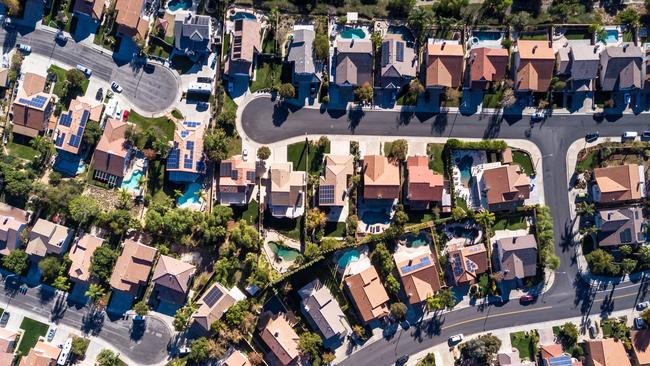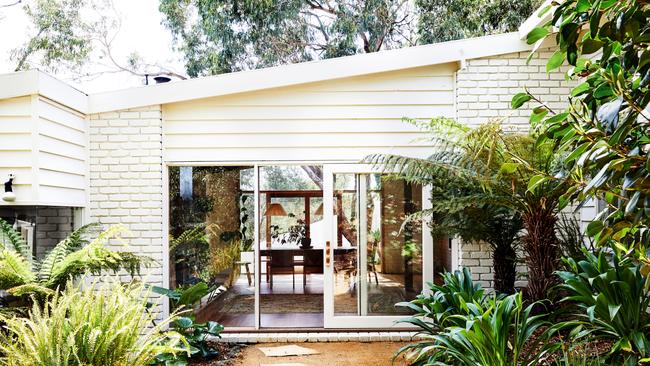How to cash in on the ‘ripple effect’ in property
Identifying which suburbs are next in line to benefit from the ripple effect can make buyers and sellers big money. Here’s what to look out for — and how to capitalise on the concept.

Property
Don't miss out on the headlines from Property. Followed categories will be added to My News.
The phrase “the ripple effect” is often tossed around in real estate circles.
But what does it actually mean, and how can it help people trying to navigate the market?
We asked those in the know to unpack the concept.
RELATED: The surprising things that can drag down your borrowing capacity
Real estate terms and buzzwords words you need to know
Homebuyer FAQs: should I buy or sell first? How do I compete at auction?
WHAT IS THE RIPPLE EFFECT?
Picture someone dropping a stone in a bucket of water, causing the water to “ripple out from the centre to the edges”.
Leading property researcher Terry Ryder, of Hotspotting, uses this analogy to describe the ripple effect.
“It simply means (housing price) growth often starts in a particular location and, over time, the growth ripples out from that centre point,” Mr Ryder said.
“It never happens that when there’s a rising market in a city, everywhere in that city rises
in unison.
“Typically it starts in the centre of a metro area and over three to four years, ripples out to the middle and then outer rings. It can then ripple from the big city to regional areas.”

There were exceptions to this rule, and the key factor was typically water.
This was evident on Melbourne’s Mornington Peninsula, where the priciest suburbs – Sorrento and Portsea – were further from the city than comparatively affordable areas such as Capel South and Rye.
Advantage Property Consulting director Frank Valentic said the ripple effect happened as prices in one suburb increased beyond the reach of buyers, forcing them to move on to the next postcode over.
“They push out further to look for the next best thing that falls within their budget,” Mr Valentic said.
“That’s usually an adjoining, lower-priced suburb.
“Demand then ripples outwards and increases the prices in those neighbouring locations.”
In Melbourne, price growth and demand had rippled north from Thornbury to Preston and now to Reservoir, he said.

Other examples were from Yarraville to Footscray, West Footscray and then Sunshine in the west, and Hampton to Sandringham, Black Rock and Mentone down south.
And in Sydney, the ripple effect had materialised from Manly to Manly Vale, and from Mosman to surrounding postcodes such as Crows Nest and Neutral Bay, The Property Expert chief executive Robert Klaric said.
“Also in the inner city, Newtown became too expensive, so demand pushed out to Sydenham and Tempe,” Mr Klaric said.
“When I was growing up, it was known as Tempe Tip, but now it has become quite trendy.”
HOW CAN BUYERS USE IT TO THEIR ADVANTAGE?
Targeting the next postcodes in line to benefit from a ripple effect could be a savvy way to buy, Mr Valentic said.
“If you buy in these suburbs before they’re popular and gentrified, you can get some massive upside in capital growth,” he said.
The way to do this was to pinpoint growth markets, and then identify suburbs within a five to 10-minute drive from them where the median price was at least 10 per cent cheaper, the buyer’s advocate said.
“You basically want to get into a suburb that’s as close to the growth suburb as possible, on your budget,” he said.

Upcoming infrastructure was also a strong signal a market could be next in line to benefit from the ripple effect, Mr Klaric said.
For example, he tipped suburbs along the under-construction Sydney Metro lines to provide “good opportunities for capital growth” that stretched further and further from the CBD as the project progressed.
Mr Ryder said buying ahead of the ripple effect also had lifestyle benefits for homebuyers.
“You might love the lifestyle and location (of a desirable suburb), but can’t afford to spend $1.2m,” he said.
“But if you look at neighbouring suburbs that are less expensive, you can have access to the same amenities.”
HOW CAN IT HELP SELLERS?
Awareness of where their market is at in the growth cycle can give would-be sellers the best chance of achieving their best price.
Mr Valentic said those with properties in areas that had not rippled yet should consider holding off selling, if they could. “It’s not an easy rule,” he said. “No one ever really knows where the cycle is stopping and starting.
“But the general rule is if you see, say, Preston and Reservoir going up and you’ve got a property in (neighbouring) Thomastown or Lalor, you’re better off trying to
hold on.”

HAS COVID CHANGED ANYTHING?
The Covid-19 pandemic had, to a degree, disrupted the inner-to-outer growth pattern by driving people to seek the space and lifestyle benefits on offer on city fringes and in regional areas, Mr Ryder said.
“In Melbourne, the most spectacular growth area has been the Mornington Peninsula and in Sydney, it has been the Central Coast and northern fringe,” he said.
Despite this, Mr Klaric expected “within 10km of the city” to remain any metro area’s strongest market.
Mr Valentic agreed. “Generally speaking, the closer to the city or water you are, the more expensive property is,” he said.
Sign up to the Herald Sun Weekly Real Estate Update. Click here to get the latest Victorian property market news delivered direct to your inbox.
MORE: Otways farm with waterfalls, ocean views and platypus colony for sale
Bioplastics boss lists $18.5m Kew mansion modelled on best hotels
Historic $4m Kingsville home poised to raise record by millions
More Coverage
Originally published as How to cash in on the ‘ripple effect’ in property





